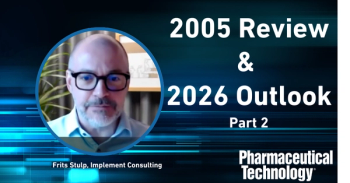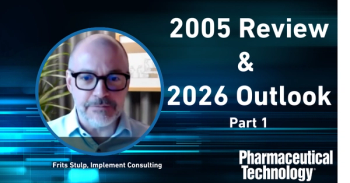
Strategies for Working with Contract Manufacturers
With more and more people in the industry sending their manufacturing processes elsewhere, it’s important to find a trustworthy contract organization and to know what to expect-and how to deal with-that organization. R. Christian Moreton, Ph.D., discussed this topic at the 2007 annual conference of Pharmaceutical Technology.
Philadelphia, PA (July 26)-Nearly 95 percent of pharmaceutical companies are increasing their spending on outsourcing activities this year, according to respondents of the 2007 PharmSource–Pharmaceutical Technology Outsourcing Survey (see the August 2007 issue, coming soon, for full survey results). With more and more people in the industry sending their manufacturing processes elsewhere, it’s important to find a trustworthy contract organization and to know what to expect-and how to deal with-that organization. R. Christian Moreton, PhD, discussed this topic at the 2007 annual conference of Pharmaceutical Technology.*
“Many companies outsource what doesn’t fit” into their overall strategy, but there are a number of reasons why outsourcing manufacturing should be considered, said Moreton, who has more than 25 years experience in the industry and is a member of Pharmaceutical Technology’s Editorial Advisory Board. The primary reason behind outsourcing is, of course, to reduce costs associated with facilities and staff. Another top reason has to do with the number of products in a company’s pipeline. “You need to keep your staff gainfully occupied,” he said. If you cannot, perhaps it’s time to outsource components of your manufacturing process.
When entering a relationship with a contract manufacturer, it’s important to keep in mind that you will not have total control. You will have to rely on the experience and capabilities of the contractor. At the same time, advised Moreton, you cannot sit back and wait for your product to come out. “You need to maintain regular communication, you need to make regular site visits to the contract facility, and you need to keep your Quality Assurance group involved.”
Site visits are especially important at the beginning of the relationship, when you are selecting a contractor. Make sure they are using the equipment in their facility regularly and are familiar with it-ask them questions about it, suggested Moreton. “Every contractor says they can do everything, and often they can, but be careful because often they cannot do everything so well.”
To ensure your outsourcing projects succeed, you need to undertake a number of steps:
- Realize that nothing goes smoothly all the time
- Communicate and ensure understanding on both sides
- Establish confidence between both parties
- Undertake appropriate due diligence (site visits, in-person meetings, examine the contractor’s strengths and weaknesses, etc.)
- Maintain regular contact, including review meetings
- Hold a kickoff meeting to set up lines of communication, to go over any gaps, etc.
In addition, Moreton advises that companies create a quality agreement, signed by the sponsor and the contractor. This statement should focus on the responsibilities of both sides regarding testing and release, including assignments, where the starting materials will come from, and how the distribution chain will be managed. The quality agreement should also include courses of action to be taken regarding out specification and out of trend results, and deviations.
Expect your product transfer to take as long as two years. Below is an example of an outsourcing timeline:
- Contract negotiation: 6-26 weeks
- Analytical method transfer and validation: 4-6 weeks
- Cleaning validation: 2-3 weeks
- Microbiological validation: 4-6 weeks
- Purchase/supply of starting materials: 6-8 weeks
- Prevalidation batches (including analysis): 4-6 weeks
- Validation batches (including analysis): 4-6 weeks
- Packaging: 1 week
- Stability: 6 weeks
- Other tasks such as bioequivalence testing: 16-24 weeks
Be sure to have contingency plans in place with your contractor in case something goes wrong such as a batch failure or missed deadlines, said Moreton. Don’t forget to go over details including where analytical testing will be done (the sponsor or contractor site), who will release a batch, and whether or not subcontracting is allowed. Also of note, with all the recent contamination issues, it’s a good idea, says Moreton, to use your own suppliers for any starting materials and excipients. “Don’t let the contractor go with a generic excipient or insist that storage costs would be too high if they use your supplier. Every raw material is critical and… quality by design will require you to properly justify everything.”
*The 2007
Pharmaceutical Technology
Annual Conference was held in Philadelphia, Pennsylvania July 24–26.
Read more
.
Newsletter
Get the essential updates shaping the future of pharma manufacturing and compliance—subscribe today to Pharmaceutical Technology and never miss a breakthrough.




